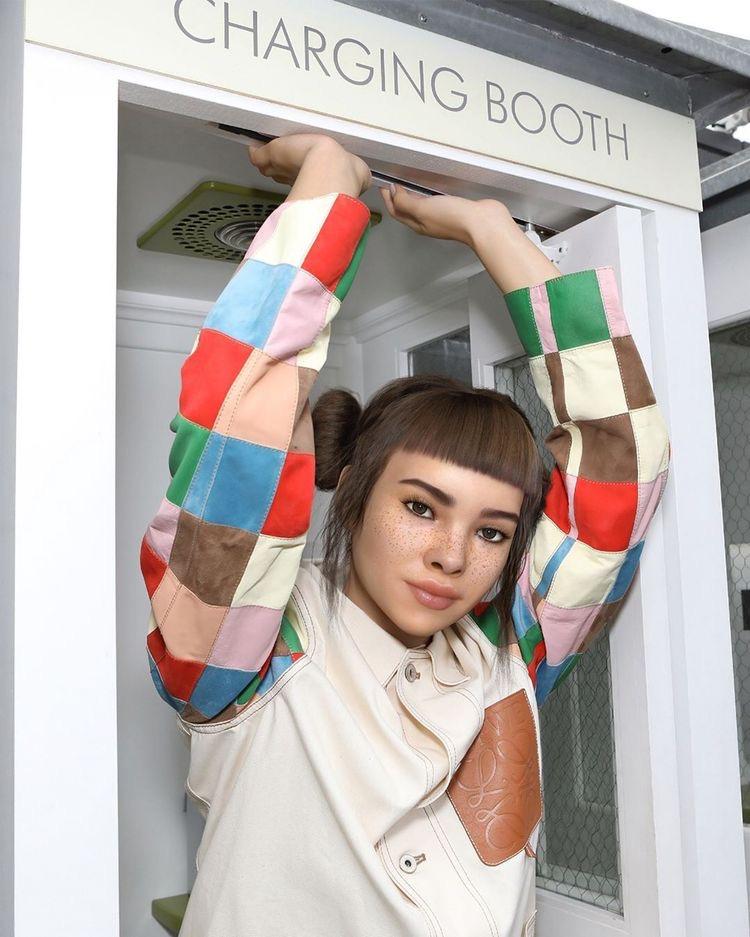
Luxury and metaverse, when influence gets involved
These last months, the whole industry seems to vibrate only to the sweet sound of metaverses, NFT, blockchain, crypto currency and other gamifications. All these notions have in common their dematerialization and their growing success. In this search for digital evolution, the latest to be the target of all covetousness is the virtual influence. From Louis Vuitton, Chanel, Gucci or Balmain, why, how and what are the risks of this trend that is revolutionizing the codes of marketing?
The opportunities of an emerging market
They are called Lil Miquela, Noonoouri, Shudu Gram, and have millions of followers on social networks. They are young, trendy and collaborate with brands more prestigious than the others.
However, they are indeed robots, virtual avatars designed entirely by tech and marketing professionals. Endowed with a personality of their own, able to make choices but also to embody strong values, these virtual influencers are a resounding success, and perfectly illustrate the ever-thinning line between reality and virtual. Perfect aesthetics, signature collections, in 2018, Balmain presented a campaign with several virtual top models. A resounding success and great media coverage, the bet had been met with flying colors. Building on this success, today while some brands collaborate via simple online partnerships, others invite these virtual influencers to participate in their biggest fashion shows.

And the benefits...
The most obvious advantages for brands? A precise control of the speech, of the image but also a seamless adaptation and an easier cost management. However, beyond the media impact, this virtual expansion also offers new creative opportunities to brands. Indeed, there is no need for miles of fabric or hours of hard work to create a new collection if it is digital. An artistic extension that gives brands the possibility to let their imagination run free, the very essence of fashion and luxury.
As Thibaut de La Rivière, director of Sup de Luxe, points out: "Metaverse and virtual influence undeniably offer brands a new artistic dimension. This digital strategy allows not only to embody the brand's values but also and above all to embody the relationship." Indeed, much more than his power of engagement, the virtual influencer is above all a vector of influence for the brand he embodies on a daily basis and in the long term. An innovation, which opens up an immense field of possibilities for development, but which also seems to have its limits.
Les risques et les enjeux
Des avatars de plus en réalistes, des storytellings toujours plus forts, difficile parfois de saisir le vrai du faux dans ce nouvel espace narratif entièrement contrôlé par le marketing. Si le désir de proximité des clients est comblé via une relation unique, la question de l’authenticité se pose.
Car, si l’influence est destinée à rassembler des communautés, un simple catalogue brandé et sponsorisé ne fédère pas. Il est donc essentiel de ne pas proposer que des contenus publicitaires au risque de perdre de l’engagement. Cette ambivalence entre contenus classiques et sponsorisés peut également nuire à une bonne perception de soi-même, surtout chez la jeune génération qui peut manquer de repères et avoir du mal à s’identifier à ces avatars.
To overcome this lack of transparency, the Federal Trade Commission in the USA has asked brands collaborating with virtual influencers, that the marketing message broadcasted is not misleading but on the contrary provided and reliable. In this desire for regulation, since July 1, 2019, it is now mandatory to clearly display whether it is a real or virtual influencer (valid also for digital chatbot) to restore some transparency.
The new challenge for luxury? Finding the right balance between the digital and physical worlds while maintaining a vision focused on innovation and new digital tools.